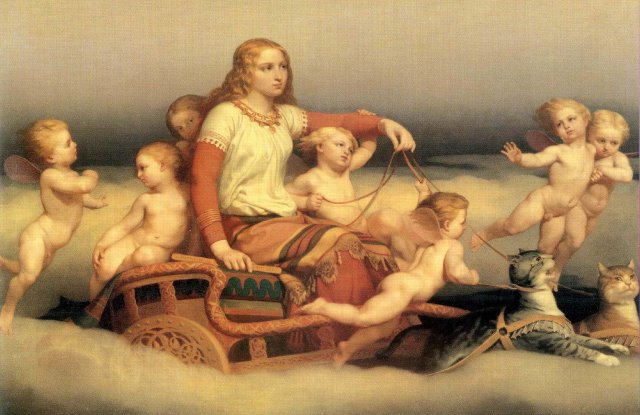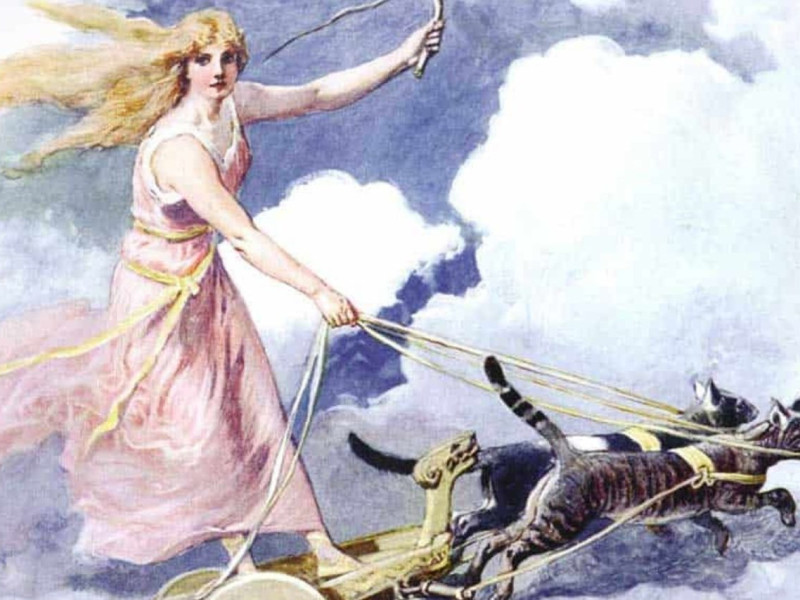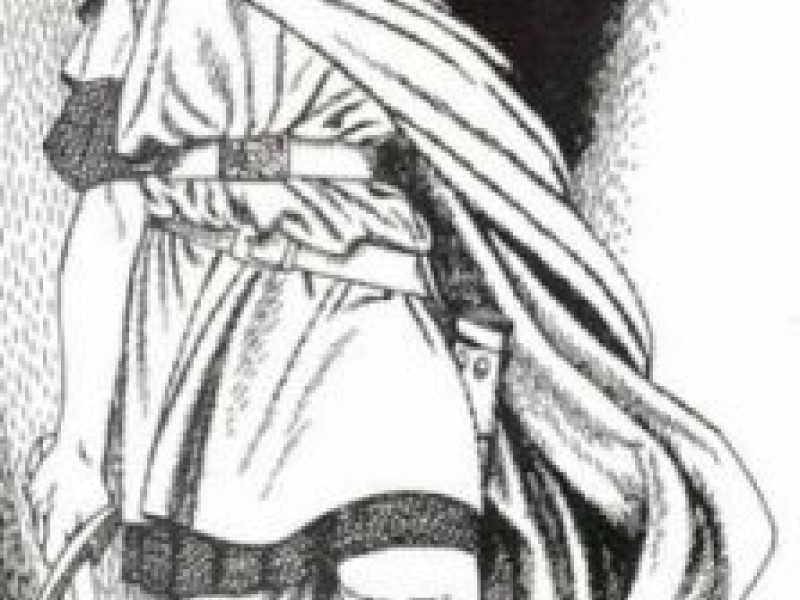Freyja
Goddess of love, beauty, fertility, magic, war and death. Freyja was the daughter of Njörd (Njord) and Njörd's nameless sister (possibly Nertheus?). She was the sister of Freyr. Like her brother and father, she was originally a Vanir goddess, but she would later become an important goddess of the Aesir. She was known by the title Vanadis, which is the "dís of the Vanir". dís is the Norse word for "goddess"; dís is usually used in plural form, dísir.
She was sometimes confused with Frigg, wife of Odin, since both of their names mean "Lady". Frigg sometimes also had the same attributes as Freyja. Another goddess she was sometimes was confused with was Idun, the Keeper of the Apple of Youth.
In several aspects, she and her brother were like the Greek deities Artemis and Apollo. They were twins; her brother was a god of light, like Apollo. Since she was a Vanir goddess, Freyja was a goddess of fertility like Artemis (fertility of the wild animals). Unlike Artemis, who was also seen as a virgin goddess, Freyja was also the goddess of love and sex.
Freyja was described as an extremely beautiful goddess, blonde and with blue eyes. Like Aphrodite, Freyja was the goddess of love and beauty. Freyja married a god named Od or Odur and became mother of two daughters, Nossa or Hnossa, and Gersimi (both daughters' names mean "Jewel"). However, Od mysteriously disappeared. She wandered the earth, searching for her husband and weeping tears of gold. (Od may have been another name for Odin).
After her husband (Od) had abandoned her or disappeared on her, she became the most promiscuous of all goddesses; she was probably the goddess of sex rather than of fertility. She had many love affairs with gods, humans, elves and even dwarves. Freyja was often seen as the mistress of Odin. Loki accused her of sleeping with every god in Asgard and all the elves in Alfheim (Poetic Edda's Lokasenna). Loki even accused her of sleeping with her brother Freyr. Freyja and her brother were husband and wife when they were living in Vanaheim (land of the Vanir), just like their father with an unnamed sister. As I understand it, incest was a normal practice among the Vanir deities, but the Aesir frowned upon incest.
Freyja was much sought after by the giants. The giants, Hrimthurs and Thrym, both wanted to marry Freyja. Thor killed both giants.
Unlike Aphrodite, but like the Greek goddesses Athena and Persephone, she was the goddess of war and death. Freyja enjoyed combat and battle. She rode into the battlefield where she received half of the fallen heroes in combat; the other half went to Odin in Valhalla. These warriors stayed in her great hall, Fólkvangar ("battlefield"), within her palace Folkvang ("Field of Folk"). Her other hall was the Sessrumnir.
She had a great love for gold. Her most prized possession was the necklace Brísingamen. She received the necklace by sleeping with four dwarves known as the Brisings (their name were possibly Alfrigg, Berling, Dvalin and Grerr). Odin was so disgusted by her sexual promiscuity that he sent Loki to steal the Brísingamen. Heimdall, the gatekeeper of Asgard who had great vision, saw the theft. He pursued Loki and recovered the necklace for Freyja. In a later version, Odin would only return the Brísingamen on the condition that she started wars in the world of men. See the Brisings.
Freyja received other gifts as well, such as a cloak of bird feathers (allowing her to transform herself into a falcon), and her chariot drawn by two cats. Another of her favourite animals was the pig or boar. Her human lover Ottar disguised himself as a battle boar with golden bristles, known as Hildesvini. She was sometimes called Sýr (sow), an epithet. She was also known to have wandered the countryside at night, in the form of a she-goat.
She was also the goddess of witchcraft, a disreputable kind of magic called seiðr (seið or seior). Her love of gold and the witchcraft she practised may have resulted in the confusion surrounding her, another Vanir goddess named Gullveig, and the witch Heid, the reincarnation of Gullveig.
Related Information
By Jimmy Joe






